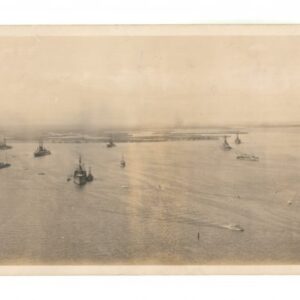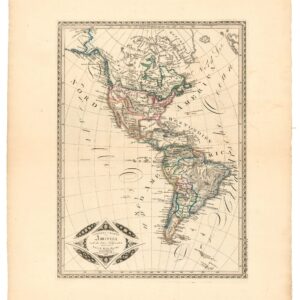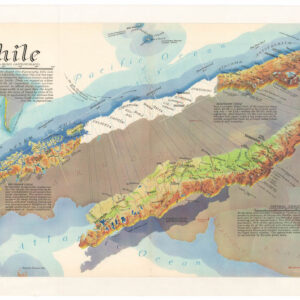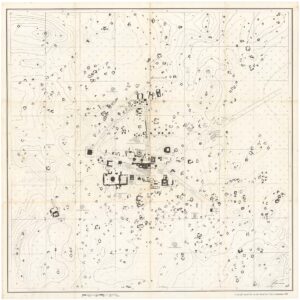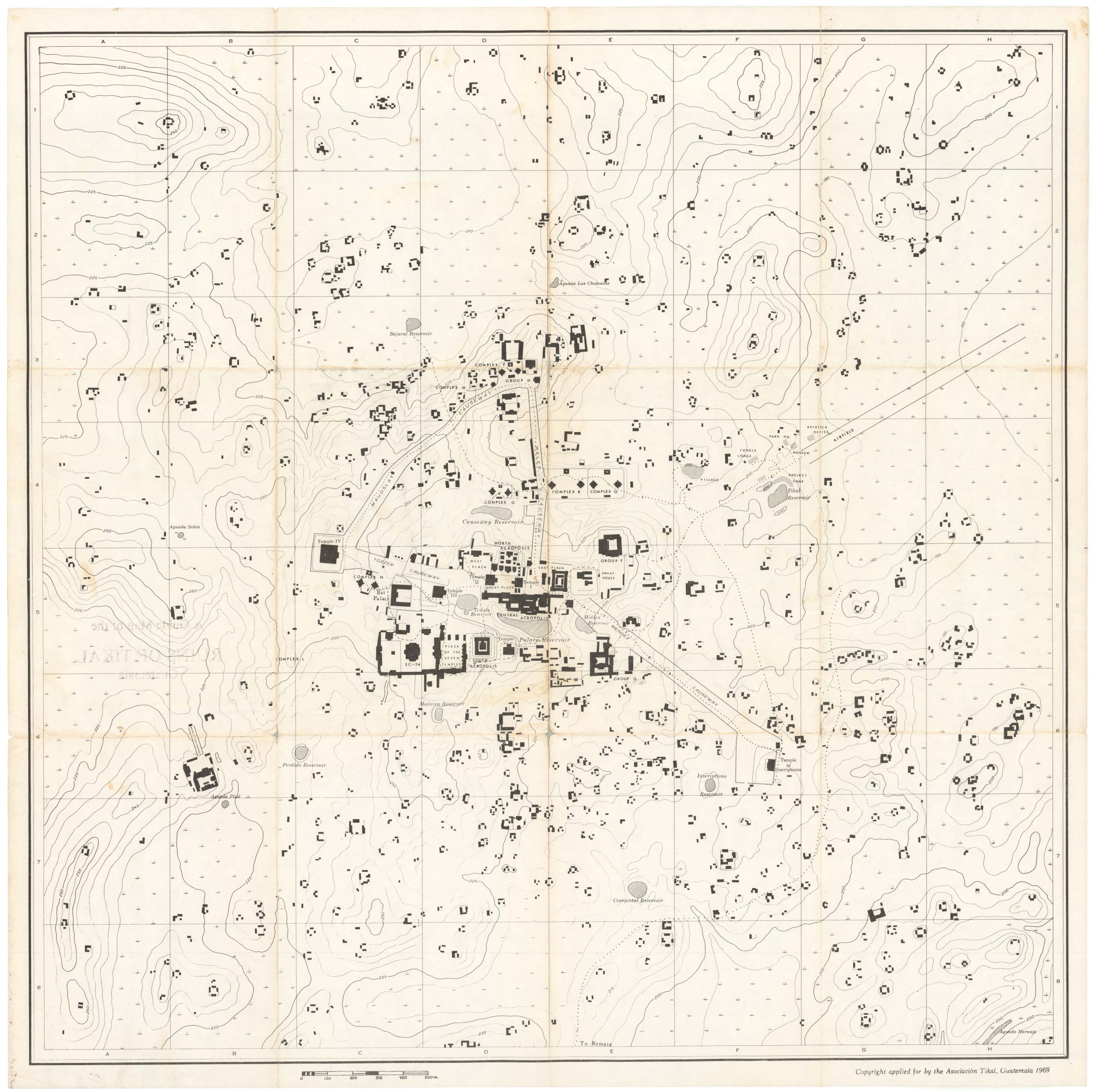Rare – the first serious and detailed published proposal for an interoceanic canal across Nicaragua, with a magnificent, chromolithographed map.
Carte d’étude pour le tracé et le profil du canal de Nicaragua par M. Thomé de Gamond, ingénieur civil, précédée de documents publiés sur cette question par Félix Belly
$1,900
1 in stock
Description
This fascinating and historically important work is the first serious, detailed published proposal to build an interoceanic canal across Nicaragua, illustrated by a large and magnificent original map. The dream to build a navigable route across the isthmus of Central America, so connecting the Atlantic with the Pacific oceans, is almost as old as the European presence in the Americas itself. The Panama Canal, completed in 1914, is so ingrained in present-day thinking that it may surprise some to learn that during much of the second half of the 19th century, Nicaragua was considered to be a far more promising location for an interoceanic route than Panama. While proposals had been explored from the 16th century onwards, it was only in the late 1850s that the first technically credible proposal to construct the canal was published. The proposal was compiled by the French duo of Félix Belly, an impresario and journalist, and Thomé de Gamond, an eccentric and brilliant engineer.
We are excited to offer the rare original publication for sale.
While Belly and Gamond’s grand design ended in disgrace, it inspired the next two generations of canal speculators to keep trying to realize the dream in Nicaragua. It is also important to note that the notion of a Nicaragua canal has since been revived, for example in 2013, when a Chinese consortium was given official approval from the Nicaraguan government to construct a canal across the country, in an effort to rival the overburdened Panama Canal. While the Chinese enterprise’s plan seems credible on paper, and is technically feasible, it is not yet clear if it will ever be realized, as the financial requirements may be prohibitive.
Félix Belly’s Nicaraguan Fiasco
Félix Belly (1816-86) was an excellent writer and charismatic journalist, but was also a terrible project manger and even worse judge of character. He was the first person to make the prospect of an interoceanic canal across Nicaragua seem like a serious possibility; however, his dream was undone by a combination of bad luck and his own personal flaws.
Belly’s early career followed a fast-rising trajectory, and he became one of France’s premier political and diplomatic journalists. He resided for some years in Istanbul, where his reports on the Sublime Porte were held as gospel by the French government and intelligentsia. His infectious enthusiasm for all matters of academia and global events saw him fêted in European capitals, no less in Berlin by the era’s greatest explorer, Alexander von Humboldt.
In 1856, Belly became psychologically obsessed with the idea of building an interoceanic canal in Central America, and was determined to go to Nicaragua to set-up the mega-project. It was at this point that his brilliant career and charmed life went off-track. In the excessively exuberant environment of the early Second Empire, he found it easy to find converts to his dream and to raise capital. Moreover, the Emperor Napoleon III was a known enthusiast of such a scheme, and Belly could be assured of his moral, if not financial, support. While his exact role remains unknown, it seems that in 1857 the emperor made Belly an official envoy of the French government in Central America, lending him much-needed legitimacy in the eyes of foreign potentiates. Belly formed an official company and managed to convince the banker Moses Millaud of Crédit Mobilier to back his venture, forwarding him seed money for an exploratory expedition to Nicaragua.
When Belly arrived in Nicaragua in early 1858, he found a country that was just recovering from civil war, but whose president, Tomás Martínez Guerrero (in office 1857-67), was eager to built an interoceanic canal in order to jumpstart Nicaragua’s economy. Belly was exceptionally charismatic and brimming with self-confidence. His success in winning over local leaders was so rapid as to be almost unbelievable. As he envisaged that such a canal would need to skirt the Nicaraguan-Costa Rican Boundary, within weeks of his arrival in the region, he managed to oversee the Cañas-Jerez Treaty (April 15, 1858), between Nicaragua (represented by President Martínez) and Costa Rica (represented by Belly’s new close friend, President Juan Rafael Mora). This compact not only committed the two nations to cooperate fully in building the canal, but to give Belly’s company exclusive rights to build and manage the canal.
Specifically, as detailed in the present work, Belly envisaged that his canal route would depart the Caribbean Sea (the Atlantic) by following the already navigable Río San Juan (which would need to be extensively dredged and improved) to and across Lake Nicaragua, and the through a manmade passage across the narrow Rivas Isthmus to the Pacific. He estimated that the construction of the canal would cost a total of between 90 and 120 million French Francs. While this was an enormous sum, he estimated that the completed, and operational canal would receive revenues of 36 million Francs of profit per annum, so allowing the construction costs to be covered within 4 years.
However, Belly’s early success with the Nicaraguan and Costa Rican presidents also led him to make an unforced error, one which would ultimately prove fatal to his deigns. Both Martínez and Mora harbored anti-American sentiments, and Belly foolishly encouraged them to give a public joint-declaration that the canal project would specifically exclude American involvement. This enraged the Americans, who henceforth worked tirelessly behind the scenes to derail Belly.
In the summer of 1858, Belly departed Nicaragua for the United States, in order to find additional investors. There he received the cold shoulder, and it is amazing that he did not anticipate this, given that it was no secret that he was behind the Martínez-Mora anti-American declaration. During this time Lord Napier, the British ambassador in Washington accurately described Belly as “a person of great intelligence but also of prodigious volubility and impetuosity.”
Belly returned to Paris so short of funds that he had to borrow the money for his passage from the Honduran ambassador. Once home, he found that his sponsor Millaud was nearly bankrupt, having lost his money on a wide assortment of international speculative schemes.
It was around this time that Belly published a small promotional pamphlet in order to attract investors, Percement de l’isthme de Panama par le canal de Nicaragua: Exposé de la question (Paris, 1858). The text of this pamphlet is reprinted within the present work, as Section V.
Belly approached Thomé de Gamond (1807-76), a brilliant engineer who was perhaps even more of a psychologically obsessive than Belly. Gamond had spent thirty years in the Netherlands, where he gained an international reputation and a significant fortune as a mining and canal engineer. In 1856, he returned to France and became fixated with the grand old concept of building a tunnel under the English Channel, connecting France and Britain. In 1857, he published a treatise on the tunnel, Étude pour l’avant-projet d’un tunnel sous-marin entre l’Angleterre et la France, reliant… les chemins de fer de ces deux pays par la ligne de Grinez à Eastware (Paris, 1857), published by the same printer as the present work and bearing many physical similarities. Like his uncle Napoleon Bonaparte, Emperor Napoleon III was said to be an enthusiast of the concept. Gamond would spend the rest of his life doggedly pursuing the tunnel project, spending all of his fortune (and all of Belly’s credit) on that elusive dream.
Returning to the Nicaragua project, Gamond agreed to serve as Belly’s technical advisor and representative in Paris. That made some sense in theory, although Belly’s decision to additionally place Gamond in charge of the company’s finances proved to be a severe error. Incredibly, he entrusted Gamond with his power-of-attorney, allowing him to borrow money on Belly’s personal account.
It was at this juncture that Belly and Gamond issued the present work. Belly included material that gave legal and political gravitas the project, as well as his own rhetorical flair in its promotion. Gamond added his technical report and drafted the magnificent large-format map of the canal route.
Belly secured a loan of 100,000 Francs, barely adequate to subsidize another, larger mission to Nicaragua. Early in 1859, Belly left France with a party of 33 men, including 4 engineers and 5 land surveyors.
Meanwhile, Gamond proceeded to borrow vast sums from Paris banks on Belly’s account. It seems that Gamond embezzled all of this money, using it to finance his true passion – his quixotic quest to build a tunnel from France to England.
Belly’s return to Nicaragua quickly proved shambolic. From the base he founded called Felicia, at the juncture of the Río Frío and Lake Nicaragua, he and his men wandered aimlessly around the bush, many falling from tropical diseases. One of his engineers did “not hesitate to express his disgust of Belly and his mad project.” Belly showed himself to be completely disorganized, even accidentally standing up presidents Martínez and Mora at a pre-arranged conference in April 1859.
The United States, while distracted by its internal political problems, ran interference on Belly. Specifically, the tycoon Cornelius Vanderbilt, who had once possessed the canal rights in Nicaragua and, since 1855 owned and operated the railway across Panama, was an ardent opponent of the French schemes. With his connivance, U.S. diplomats managed to convince President Martínez that Belly was a broke crackpot and that Managua’s future was best secured with Uncle Sam. On May 29, 1858, Martínez duly rescinded Belly’s monopoly for the canal as proscribed by the Cañas-Jerez Treaty, opening the project to new suitors.
Next, the steamship on which Belly was traveling across Lake Nicaragua blew up. Belly and his crew were assumed lost, and his long disenchanted team in Felicia decided to up stakes and return to France. When Belly arrived there in a lifeboat, he found his camp deserted.
Finally, in August 1859 Mora was deposed as president of Costa Rica and thus Belly had lost his last influential friend in Central America.
Belly returned to Paris to find that Gamond had borrowed vast sums of money under his name, all of which had disappeared. Moreover, France’s involvement in the Second War of Italian Independence (1859-61), ensured that the French government would not come to his rescue, nor was any private interest willing to lend him any additional funds. In February 1861, J.B. Roussel, the man that Belly had entrusted to manage his affairs, sold Belly’s stake in the company against some of the company’s debts, but declined to inform Belly. While Belly sued Roussel, and would eventually win the case (in 1865), the remedy would come too little, and way too late.
Belly was forced to flee to Geneva to escape his creditors. While there, he amazingly managed to talk some bankers into lending him funds, and so promptly retuned to Nicaragua. However, once there, he was unable to gain any support for the endeavor and it became clear that his dream had gone ‘Belly up.’ He returned to his former career as a journalist, although he was often tempted to moonlight in speculative schemes. The French chapter in the Nicaragua Canal saga was now over.
The Present Pamphlet & Map in Focus
As for the present work, the text is organized into six sections: I. Text of the Clayton-Bulwer Treaty (1850); II. Text of the Convention of Rivas (1858), also known as the Cañas-Jerez Treaty; III. Copy of a Letter from Lord Malmesbury (the British Foreign Secretary) to Belly giving his consent to the project; IV. An intriguing 1846 paper on the concept a Trans-Nicaragua Canal written by then Prince Louis-Napoleon (later Emperor Napoleon III); V. A reprinting of Belly’s Percement de l’isthme, advocating the canal project; VI. A technical paper on the construction of the canal by Thomé de Gamond.
Sections I, II, and III are significant for setting out the legal and political foundations upon which the Nicaragua canal project could proceed. Section IV is curious, as it shows that Emperor Napoleon III was both a knowledgeable and long-standing enthusiast of the concept. In Section V, Belly makes a compelling rhetorical case in favor of his particular canal proposal. Section VI is perhaps the most important, as here Gamond explains his technical specifications for the canal, critical information that informs his large map.
The highlight of the present work is Gamond’s magnificent large, folding map of the canal route, embracing all of southern Nicaragua: Carte d’Etude dressée par Mr. Thomé de Gamond pour servir a l’avant-projet du canal Interocéanique de Nicaragua, par le Fleuve Saint Jean et le Col de Salinas en exécution du traité de concession conclu le 1er. Mai 1858 entre les Gouvernements de Nicaragua et Costa-Rica et Mr. Felix Belly, printed by Avril frères, Paris. The map captures the topography in gorgeous chromolithographed relief, and shows the route of the passage from the Caribbean, up the Río San Juan, across Lake Nicaragua and through the envisaged canal and locks traversing the Rivas Isthmus, entering the Pacific at the Bahia Salinas, along the Nicaragua-Costa Rica frontier. Below is an engineer’s cross-section of the canal route, Profil du canal des deux océans établi au tirant d’eau de huit mètre. In the upper right quadrant of the composition is a map of the greater region, Carte de l’Amérique centrale comprenant les 5 républiques de Guatemala, San-Salvador, Honduras, Nicaragua et Costa-Rica.
The present complete combination of Belly’s book and Gamond’s map is quite scarce on the market; examples seem to appear only once every 5 to 10 years.
The Dream of a Nicaraguan Interoceanic Canal
The dream of constructing an interoceanic canal across Nicaragua is a centuries-long international saga, one that seesawed back and forth. Indeed, it seemed that just at the very moment when circumstances within Nicaragua permitted the project to become a reality, global events interceded and swept even the best-laid plans away.
The notion of constructing a canal across the isthmus of Central America in order to connect the Atlantic with the Pacific Oceans has been explored since the 16th century. Possible routes included traversing Nicaragua, Panama, Mexico’s Isthmus of Tehauntepec, and even a channel from Colombia’s Gulf of Darién to the Pacific. The distance across the isthmus was tantalizingly short compared to the long sailing route around Cape Horn.
The natural geography of Nicaragua seemed, on the face of it, to be far more accommodating than the alternatives. Lake Nicaragua, with an average surface elevation of only 33 meters (107 feet), was connected to the Caribbean Sea by the Río San Juan, which was navigable for small vessels. All that separated the lake from the Pacific was the narrow Rivas Isthmus, only 12 miles (19 km) wide at tis narrowest. Although elevated, it could conceivably be crossed by a canal with locks. As early as 1551, the Spanish colonial regime commissioned a feasibility study, although the costs and technical challenges proved prohibitive.
Lake Nicaragua’s easy connection with the Atlantic came to the fore in 1665, when an expedition led by the legendary pirate Henry Morgan was able to row up the Río San Juan in 12-metre long canoes and sack Granada, the wealthy city along the shores of the lake.
The idea of constructing a canal across the Rivas Isthmus was revived in 1781, when the Spanish commissioned surveys, although once again financial constraints killed the project.
It was only during the 19th century, after the Industrial Revolution, that such a project was considered technically feasible, even if many of the traditional challenges remained problematic.
Following the era of Latin American revolutions, the newly founded Federal Republic of Central America (FRCA), which comprised Guatemala, Honduras, Nicaragua and Costa Rica, seriously investigated building a canal across Nicaragua. In 1825, the FRCA government commissioned surveyors to chart a viable route. However, the key issue was that no country in the region possessed anything near the enormous capital required, nor the ability to marshal the immense technical expertise to fulfill such a project. The assistance of an outside industrial super-power, namely Britain, the United States or France was necessary.
The FRCA authorities contacted the U.S. Government, asking them to sponsor the project. While President John Quincy Adams thought the idea had merit, in 1826 it was rejected by Congress. American legislators were worried about the cost, political instability in Nicaragua, as well as the possibility of offending Britain, which still claimed the Mosquito Coast (much of the Caribbean littoral regions of Nicaragua and Honduras).
The California Gold Rush and the U.S. acquisition of vast territories bordering the Pacific during the Mexican-American War (1845-8) revived American interest in an interoceanic canal in Central America. That being said, for the U.S., or any other foreign power, to invest the vast resources necessary to build a trans-isthmus canal, they would have to be confident that they exercised sufficient political influence, if not direct control, over the country in which the canal was to be located. Mexico was an enormous and politically unstable nation, and exercising enduring control over the country would be a prohibitively Herculean endeavor. Panama was a province of the Republic of Colombia, a large country controlled by a sophisticated elite, with its capital, Bogota, located deep in the Andes. Controlling Colombia would be a feat beyond even the most aggressive imperialist’s abilities.
On the other hand, while Nicaragua, which had become an independent republic in 1838 (following the dissolution of the FRCA), was prone to political instability, it was a small nation, which could supposedly be invaded and controlled by a European or American force with relative ease, if necessary.
The American tycoon Cornelius Vanderbilt moved quickly. In 1849, he made an agreement with the Nicaraguan government for his Accessory Transit Company to be given exclusive rights to build the canal across he country within the next 12 years. Moreover, until the canal was completed, it was permitted to operate a monopoly transport route, by steamboat and stagecoach, across Nicaragua. Significantly, this opened the quickest route between New York and San Francisco.
Meanwhile, the Clayton–Bulwer Treaty (1850), between the U.S. and Britain, gave tacit British approval to American designs to build the trans-Nicaragua canal, in exchange for Washington’s acceptance of the British presence on the Mosquito Coast. The way now appeared open for the Americans to realize the long-held dream.
However, dramatic events in Nicaragua, ironically driven by an American citizen, extinguished U.S. plans to built the canal. In 1854, Nicaragua fell into a civil war, fought between its two main political parties. In 1855, William Walker, the American ‘Filibuster,’ took advantage of the situation, arriving in the country with small force of crack troops. The following year, allied with the forces of the Liberal Party, he managed to take over much of the country, declaring himself President. He shutdown Vanderbilt’s transport line, planning to take over the canal project for himself. However, in 1857, the combined forces of the Conservative Party and the forces of other Central American countries ran Walker out of the country.
In spite of the restoration of order in Nicaragua, American enthusiasm for building the canal fell to an all-time low. The Walker melodrama frightened investors and stoked anti-American sentiment throughout Nicaragua’s ruling Conservative party. Moreover, the United States was in the process of being torn apart by internal cleavages that would lead to the U.S. Civil War (1861-5).
Britain, another potential suitor for the canal, found itself preoccupied, notably by its huge debts from the Crimean War and a Rebellion in India (1857-8). London lost all interest in Central America, and with the Treaty of Managua (1860), it surrendered suzerainty of the Mosquito Coast, between Cabo Gracias a Dios and Greytown, to Nicaragua.
The initiative for building the trans-Nicaragua Canal thus fell to France, at that time ruled by the grandiose and quixotic Emperor Napoleon III, a long-time enthusiast of the canal project. France was entering a period of muscular global expansion and sponsored military expeditions and economic mega-projects all across the globe, from Latin America to Vietnam. Of specific relevance, France possessed the most advanced civil engineering capabilities in the world, and its expertise in canal construction was second to none. In 1854, Ferdinand de Lesseps negotiated the concession with the Pasha of Egypt that would lead a French consortium to construct the Suez Canal (completed in 1869). For a time it seemed that France was certain to seize the initiative – creating and controlling both of the great interoceanic canals.
It was in this context that Belly’s endeavor was undertaken. However, its failure discouraged further French attempts towards building a canal in Nicaragua. Moreover, France’s involvement in military actions in Italy (1859-61) and, more importantly, the calamitous French Intervention in Mexico (1862-7), drained the nation’s resources and its enthusiasm for epic adventures in the Americas.
In the wake of the Union victory in the U.S. Civil War, the United States reasserted its prerogative under the Monroe Doctrine to control affairs in its hemisphere and to, once gain, embrace the dream of an interoceanic canal in Central America. As a prelude to this, they made sure that whatever was left of the French presence in Nicaragua was sent packing.
In 1872, representatives of U.S. President Ulysses Grant engaged Nicaragua’s leadership with their desire to sponsor a canal across Nicaragua. In particular, they corresponded with Maximilian von Sonnenstern, Nicaragua’s highly competent official state engineer. The Americans held the courtly, German-born Sonnenstern in high regard, and the discussions were remarkably amicable, with both sides seeming to want to build a symbiotic relationship.
In 1874, Sonnenstern travelled to Washington, D.C., as the head of a Nicaraguan delegation, whereupon he was fêted by cabinet secretaries, congressman, engineers and potential investors. Sonnenstern’s proposal for the canal, Report on the Nicaragua route for an inter-oceanic ship-canal, with a review of other proposed routes; made by Maximilian von Sonnenstern to the minister of public works of Nicaragua (1874), was published for the United States Coast Survey by the U.S. Government Printing Office.
But once again, events conspired to scuttle the best-laid plans. The global economic Depression of 1873–79 threw cold water on American enthusiasm for a mega-project. Moreover, the success of the Central Pacific Railroad (completed in 1869), the first transcontinental railway in North America, somewhat lessened the urgency of an interoceanic canal.
In 1881, the irrepressible Ferdinand de Lesseps headed a French consortium that commenced building a canal across Panama. This proved to be one of the great disasters in the history of modern engineering. Not only did the enterprise go bankrupt, landing Lesseps and his associates in court for fraud, but by 1894 the project had wasted U.S. $287 million and cost the lives of 22,000 workers.
The initially promising prospect that the French would be successful naturally held up any action on the Nicaragua Canal. However, once it became clear that Panama project was a disaster, movement on the Nicaragua file resumed, although the horrific spectacle in Panama caused considerable trepidation, such that any action was half-hearted.
In 1888, the U.S. Congress chartered the Nicaragua Canal Company and modest efforts were made to survey the canal route and to clear brush along its path. However, illness started to take members of the work parties, and many feared that they were headed for a repeat of the Panama nightmare.
In 1895, the Nicaragua project received another blow when the respected Swiss engineer Henri François Pittier, then a resident of nearby Costa Rica, wrote a damning report that suggested that that any canal route from the Caribbean to Lake Nicaragua would be plagued by chronic flooding and landslides and, moreover, that the region was subject to seismic activity that could easily destroy an canal. The Nicaragua project was now on life-support.
Enter Philippe-Jean Bunau-Varilla, an extremely clever, yet amazing disreputable French investor and showman. He was one of the only people who had made a fortune from the debacle in Panama as a land speculator and contractor. He still owned immense amounts of property along the canal route in Panama, and had excellent connections with the local government and people. If the canal project could be revived in Panama, he stood to multiply his fortune many times over.
In 1898, Bunau-Varilla hired America’s first super-lobbyist, William Nelson Cromwell, to go to any lengths to convince Congress to kill the Nicaragua project and to instead build the canal in Panama. The U.S. was in an expansionist mood, having just annexed Hawaii, and having gained many Pacific islands following its victory in the Spanish-American War. America was now more eager than ever to build the interoceanic canal.
The catastrophic 1902 eruption of Mont Pelée on Martinique created a global media spectacle and great phobia of volcanoes. Cromwell brilliantly took advantage of this, planting a story in the New York Times that grossly exaggerated the danger to the Nicaragua Canal route posed by the Momotombo Volcano, located along the northwestern shore of Lake Nicaragua (in reality, the danger was very remote). Readers of the Times could be forgiven for believing that Mombotombo was a ticking time bomb that could, and would, destroy any Nicaragua canal without warning. To underscore the point, Cromwell sent every congressman a recently printed official Nicaraguan postal stamp that featured a picture of a smoking Mount Mombotombo. The ruse worked, and the Nicaragua Canal project was dead. So grateful was Bunau-Varilla that he paid Cromwell U.S. $800,000 – a sum so enormous that, adjusted for inflation, it is likely still a world record for a lobbying fee.
However, Bunau-Varilla was no done. His next plan was to make Panama into a ‘banana republic’ that the U.S. and his canal syndicate could completely control and manipulate at-will. The government of Colombia, of which Panama was a part, was proving uncooperative, and Colombia was far too large for external forces to control. In 1903, Bunau-Varilla took advantage of the low-grade separatist sentiment that existed amongst the Panamanian population to manufacture a ‘popular rebellion’ for the ‘freedom’ of Panama. This design had President Theodore Roosevelt’s active support, and Colombia, which had just endured a brutal civil war, was in no position to stop Panama from declaring ‘independence’ later that year.
The rest is history. In 1904, the United States purchased the French rights and property of the Panama Canal project and managed to gain sovereignty of the ‘Canal Zone’ from the “grateful” Panamanian nation. The Panama Canal was built, albeit at great cost in blood and treasure, opening for traffic in 1914.
The Nicaragua Canal Revived?
The Nicaraguan Canal concept has recently been revived. Even though the Panama Canal has recently undergone extensive upgrades, it is still overburdened and, in theory, the rapid growth in global shipping indicates that the market will support another interoceanic canal across Central America. The economy of Nicaragua has long been floundering, and such a project could revitalize its fortunes.
In June 2013, the Nicaraguan National Assembly, with the support of President Daniel Ortega, awarded the Hong Kong Nicaragua Canal Development Investment Company (HKND Group), headed by the Chinese billionaire Wang Jing, an exclusive concession to build and mange a canal across Nicaragua. The project is budgeted to cost U.S. $50 billion and the route is planned to follow a channel from the mouth of the Punta Gorda River, on the Caribbean (well to the north of the traditional route along the Río San Juan), to Lake Nicaragua, and then through a canal crossing the Rivas Isthmus, entering the Pacific at Brito.
However, construction, which was supposed to commence in late 2014, has been postponed on several occasions, and is yet to start in earnest. It remains unclear whether history will repeat itself and the project will ultimately die, or, rather that the delays are simply the growing pains of a cutting-edge mega-project. We will all have to stay tuned to find out!
Cartographer(s):
Condition Description
Collation Complete: 90 pp., 1 f., plus 1 large folding chromolithographed map mounted upon original linen (71 x 96 cm; 28 x 38 in), all bound in original boards with pastedown title and advertisements, spine in original green cloth with gilt title. Map is generally bright and clean; some text pages with light foxing; covers with some shelf-ware, overall an attractive example.
References
David Rumsey Collection: 4386.004.
Kapp, Maps of Central America, no. 263; Palou 27059; Sabin 26518; Cf. C. Allen, ‘Félix Belly: Nicaraguan Canal Promoter’, The Hispanic American Historical Review, vol. 37, no. 1 (1957), pp. 46-59.
